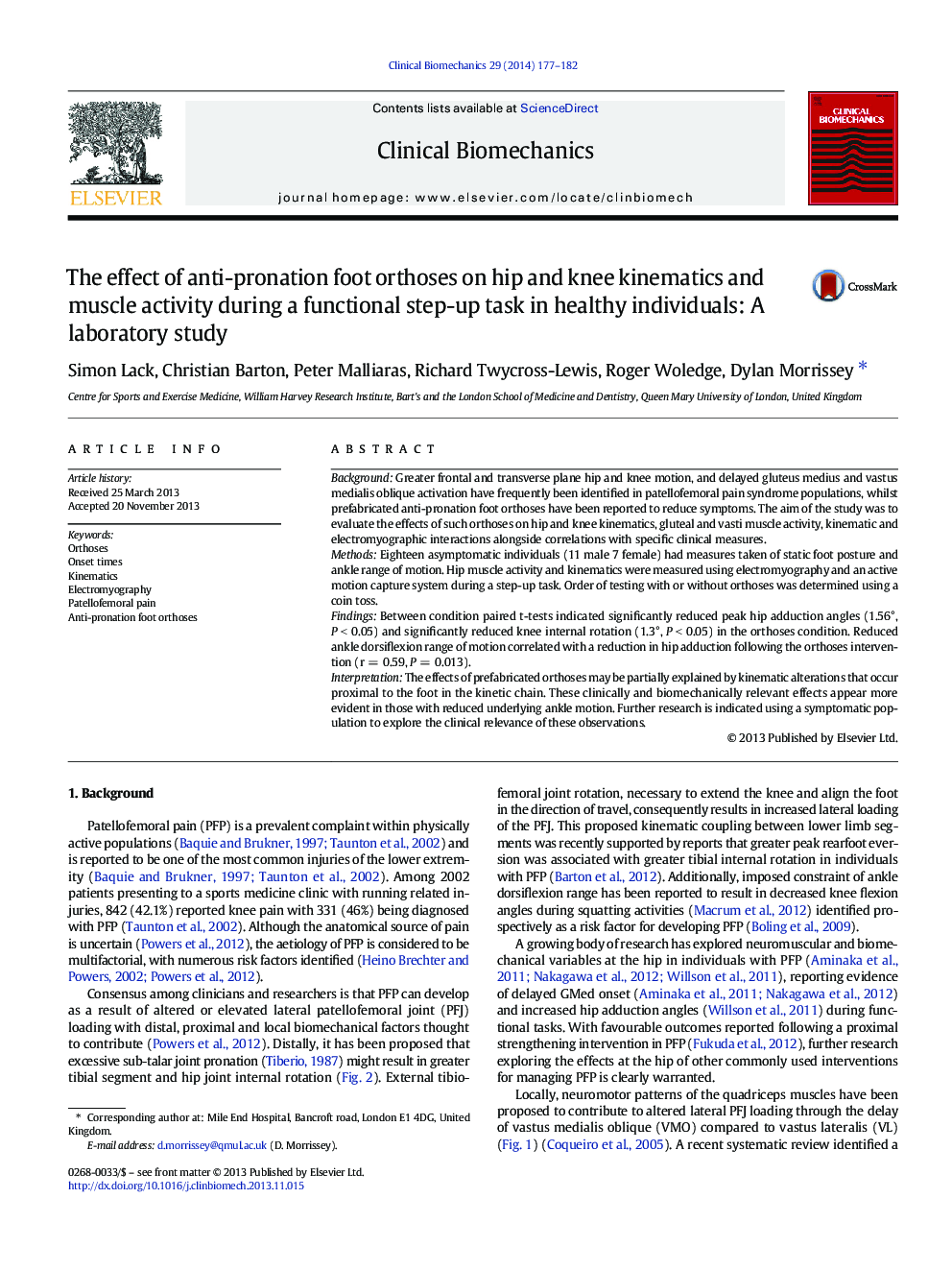| Article ID | Journal | Published Year | Pages | File Type |
|---|---|---|---|---|
| 6205020 | Clinical Biomechanics | 2014 | 6 Pages |
BackgroundGreater frontal and transverse plane hip and knee motion, and delayed gluteus medius and vastus medialis oblique activation have frequently been identified in patellofemoral pain syndrome populations, whilst prefabricated anti-pronation foot orthoses have been reported to reduce symptoms. The aim of the study was to evaluate the effects of such orthoses on hip and knee kinematics, gluteal and vasti muscle activity, kinematic and electromyographic interactions alongside correlations with specific clinical measures.MethodsEighteen asymptomatic individuals (11 male 7 female) had measures taken of static foot posture and ankle range of motion. Hip muscle activity and kinematics were measured using electromyography and an active motion capture system during a step-up task. Order of testing with or without orthoses was determined using a coin toss.FindingsBetween condition paired t-tests indicated significantly reduced peak hip adduction angles (1.56°, P < 0.05) and significantly reduced knee internal rotation (1.3°, P < 0.05) in the orthoses condition. Reduced ankle dorsiflexion range of motion correlated with a reduction in hip adduction following the orthoses intervention (r = 0.59, P = 0.013).InterpretationThe effects of prefabricated orthoses may be partially explained by kinematic alterations that occur proximal to the foot in the kinetic chain. These clinically and biomechanically relevant effects appear more evident in those with reduced underlying ankle motion. Further research is indicated using a symptomatic population to explore the clinical relevance of these observations.
